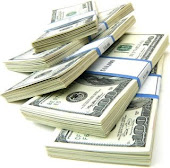File this post away when you’re done reading it, use your browsers ‘favorites’ feature and make sure you can get back to it when the time comes. Today’s topic is Auction Drafts, something that won’t necessarily affect you now, but will affect you either in the next fantasy sport you play. Hopefully by now I’ve convinced those of you who have never done an auction draft to take the plunge. It is truly the best way to start off your season. For those who have done one, take the following tips to heart, they will serve you well. Before I begin: a quick primer.
In an auction draft, each manager is awarded a ‘purse’ with equal amounts of money (usually $200). The draft order is determined by random. When it is your turn in the draft order, you ‘nominate’ a player to be drafted and you set the opening bid. From there, much like any old auction, every owner has the chance to bid higher for this player. The price rises until no one wants to bid anymore, and the final bidder wins the player for the final price. That amount is deducted from their ‘purse’ and the next owner nominates a player. If you use keepers, each team starts off with their keeper already on their squad, and that keeper’s price is deducted from his ‘purse’. In this instance, purses will not be equal (different amounts, different players) and players who choose not to have a keeper will have more money to start with. Everything is very fair.
There are three things I want you to keep in mind as you enter your next auction draft. These tips will make sure you have a leg up on the competition.
1) Throw out any ‘cheat sheets’ with auction values
These are worthless. There is no such thing as any player going off at the same price in two different auctions. OK that’s an exaggeration, but you get my point. The whole idea behind an auction is that no one knows what price a player will go off at, and anchoring yourself to a sheet, no matter how ‘technical’ the author claims to be, will only hurt you. Time and time again I watch as managers will stop bidding for a player because his price has gone above their ‘cheat sheet’ price, only to regret the decision later. These same managers will swear to never make that mistake again, and then will make that exact same mistake in the very next draft. I’m not saying you shouldn’t have a rankings or tiers list in front of you. It’s important to have an idea of how players are expected to perform. Just don’t have $ values next to them too, completely useless. Be reasonable (bid in 1$ increments only), but don’t stop bidding on a player you really want because the price is too high.
2) Never nominate a player you actually want on your team
Imagine standing up in an auction, before the bidding even begins, and announcing to the crowd ‘Hey, I like this item, I’ll pay top dollar for it!’ That’s exactly what happens when you nominate a player you like. Everyone will instantly notice it and bid you higher. The whole mystique of an auction draft is not knowing who will make the next bid, and not knowing if someone wants a player or they are just trying to ‘run up the price’. You need to use this to your advantage instead of having it work against you. Moreover, by nominating a player you don’t want, and particularly one you expect others will want, takes a lot of dollars out of someone else’s pocket. This leaves fewer dollars to bid against you when a player you like is nominated. I can tell you right now, in Baseball 2010, my first nomination will be Jonathan Papelbon. There are four other Red Sox fans in my league and they will all scramble to get him.
3) Don’t be afraid to pay for a top tier player, just be sure you get one.
We’ve gone over this a bunch of times; the value of a top tier player far outweighs anyone else. Even combinations of two Tier Two players can fall short of that one Top Tier guy. Be sure you pull one down. It’s also likely that these guys will be nominated early. It’s my experience that the first Top Tier player to get nominated in every auction draft, ends up going for a price much lower than where he should have gone. Thus you have the double benefit of scoring a Top Tier guy and getting him for a lower value than he is worth. Still, when you’re bidding for him, especially if he is the first one out there, it’s going to get scary as the numbers rise. His final price might even be as high as double what a ‘cheat sheet’ will say you should pay. I don’t care, ink that player. You’re at such a huge advantage having him on your team. We all know there are many gems that you’ll find in later rounds and on the FA wire to fill in the blanks. There aren’t many Top Tier players, and people rarely trade them. Also, in the case where 2 or 3 guys are in that Top Tier, don’t wait for the third one to come up for bidding before you strike. He’s likely to go for the highest price. The first one nominated will undoubtedly be the one that goes at the cheapest price. Early bird gets the worm. Don’t be greedy either, one top tier player is enough.
Like I said, file this post away. Save it for review when you’re preparing for your next draft. These simple steps will make the difference between gunning out of the gate or scrambling to make adjustments. Do you have any auction draft strategies to add? If so, share them with the group! Remember ballas, it’s US vs. THEM; let’s harness the power of this community to make sure WE always DOMINATE.














No comments:
Post a Comment